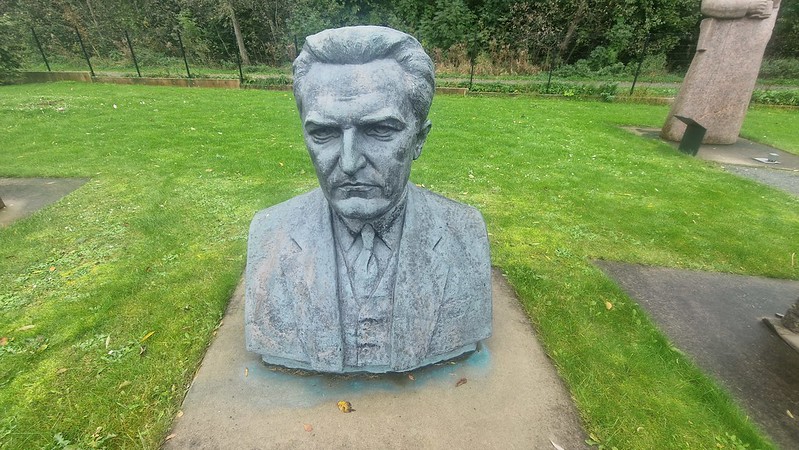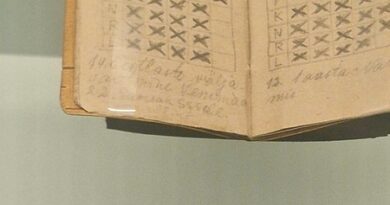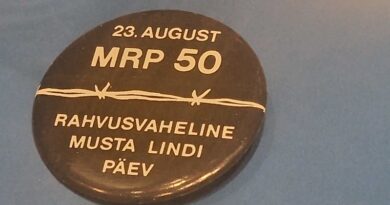Tallinn Trip – Soviet Statue Graveyard (Memorial to Jaan Anvelt)
This memorial is to Jaan Anvelt (1884-1937), a prominent Estonian Bolshevik revolutionary and writer who played a significant role in the political landscape of Estonia during the early 20th century. Born in Viljandi County, he became involved in socialist politics at a young age and was a member of the Russian Social Democratic Labour Party and a leader of the Estonian student socialist movement. Anvelt was a passionate advocate for the rights of workers and peasants and believed in the establishment of a socialist state in Estonia.
During the tumultuous years of the Russian Revolution and the subsequent Estonian War of Independence, Anvelt emerged as a key figure in the Estonian Communist Party. He served as the first premier of the Soviet Executive Committee of Estonia and later as the chairman of the Council of the Commune of the Working People of Estonia. Anvelt was instrumental in establishing Soviet power in Estonia, albeit briefly, before it was overthrown by Estonian and German forces.
Following the Estonian War of Independence, Anvelt fled to Soviet Russia, where he continued his political and literary activities. He held various positions within the Communist Party and the Soviet government, contributing to the development of Estonian culture and literature within the Soviet Union. However, Anvelt’s fate took a tragic turn during Stalin’s Great Purge in the 1930s. He was arrested by the NKVD in 1937 on fabricated charges of counter-revolutionary activities. Imprisoned and subjected to torture, Anvelt died from the injuries sustained during a brutal beating while in custody.
Designed by Martin Saks, the statue was placed on what was then Jaan Anvelt Street on 24 July 1962 and it remained there until 1992, with a pressure to remove it more in case it was stolen by criminals for scrap metal than any immediate need to take him off display. It would be easy to write him off as a traitor to the Estonian people, but he was a well read man and he has made significant contributions to literature. As with many historical figures, Estonians and Russians tend to have rather different perspectives on his legacy. Let’s just say he’s a reminder that history is rarely black and white, and even revolutionaries can have a complicated story to tell.





